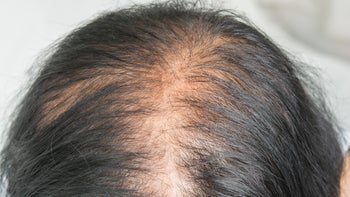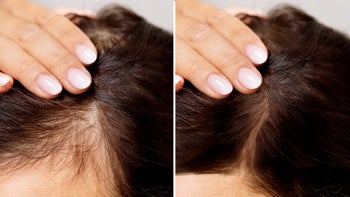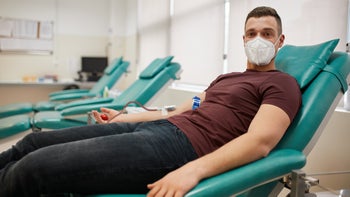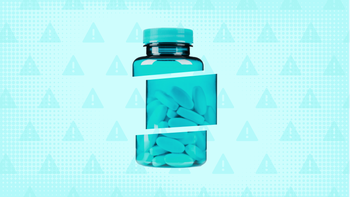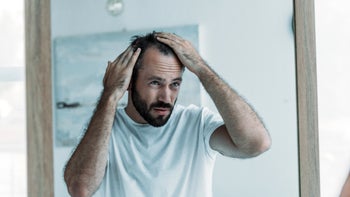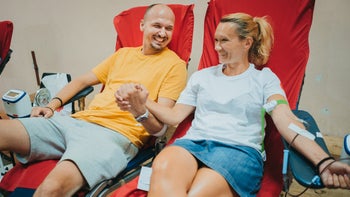
Finasteride for Hair Loss: How to Save Your Hair and Money
Key takeaways:
Finasteride is an FDA-approved medication that treats hair loss in men. Studies show it can help slow or reverse the process of hair loss.
Common finasteride side effects include loss of libido, breast enlargement, erectile dysfunction (ED), and lower ejaculatory volume.
Finasteride is available as a lower-cost generic. GoodRx can help you save over 86% off the average retail price at certain pharmacies.
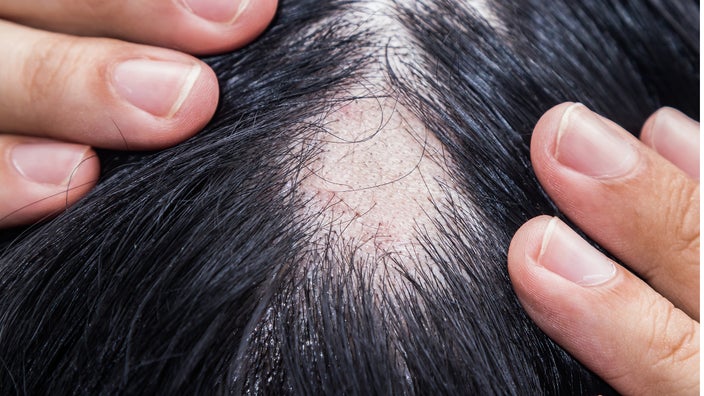
Hair loss is a big deal for both men and women. For many, losing hair can cause distress and anxiety. Losing hair can also be damaging to self-image, especially if the hair loss happens quickly rather than over time. Fortunately, there are effective, low-cost treatments — like finasteride — for hair loss.
As you get older, changes in your body — such as hormone adjustments and genetics — can cause receding hairlines and hair thinning. Since hair loss is a common problem, researchers have been working for years on treatments to help slow hair loss and possibly even promote hair growth.
Finasteride (Propecia) is one treatment that is FDA-approved for hair loss. As early as 1974, the effects of finasteride on limiting baldness in males was described. Read on to learn about how finasteride works to help hair loss, its side effects, and cost, to find out whether the medication may be right for you.
Is finasteride effective for hair loss?
Yes, studies suggest finasteride is an effective option for hair loss. Finasteride was FDA-approved in 1997 to treat hair loss, after it was originally approved in 1992 to treat benign prostatic hyperplasia (BPH). Finasteride has also been used off-label to treat other conditions like hirsutism.
Finasteride can significantly reduce hair loss related to androgen hormone changes. Androgens are a group of sex hormones responsible for male characteristics, and testosterone is the most well-known androgen.
But finasteride can take a long time to make a noticeable difference in hair growth. In one study, some people taking finasteride for hair loss noticed a difference as early as 1 year after starting, and more had benefits over 5 to 10 years of treatment. Even those who didn’t see any difference after taking it for 1 year, saw improvement as they continued treatment.
What you may not know about finasteride is that it comes in two different doses, but only one is approved for hair loss. Finasteride 1 mg (as Propecia) is approved for hair loss and finasteride 5 mg (as Proscar) is approved for BPH. While it might seem like a small difference, it can affect how well the medication works and the side effects you experience.
So, while finasteride is effective for hair loss for many people, you may need to use the medication for at least a year before seeing substantial benefit.
Propecia (finasteride) for women
While finasteride is usually used as a treatment to correct hair loss in men, it has also been studied in women. One of the problems with finasteride for women is that it can have harmful effects to an unborn fetus. So women of childbearing age usually avoid taking the medication or use a contraceptive while taking it.
Finasteride seems to work differently in women than in men for hair loss. While male hair loss associated with age is mainly androgenic hair loss (caused by male hormones), the role of androgen hormones in female hair loss is unclear. However, there is a link between androgen hormones and hair loss in women.
A few small studies looked at the effects of finasteride in females. Specifically, they looked at a low dose (1.25 mg daily), medium dose (2.5 mg daily), and high dose (5 mg daily). Overall, the effects of each of these dosing regimens was positive for finasteride, indicating that it may be helpful.
Keep in mind, if you’re a woman and your healthcare provider recommends using finasteride, it would be considered an off-label use. Finasteride has not been FDA-approved for hair loss in women. A different medication, minoxidil (Rogaine) is approved to treat hair loss in women.
Does finasteride regrow hair or just stop hair loss?
Finasteride works by slowing the process of hair loss. The medication works for hair loss by blocking the conversion of the hormone testosterone to dihydrotestosterone (DHT). DHT is linked to hair loss in both women and men. So by lowering DHT in the body, finasteride can slow or reverse hair loss.
In some cases, low DHT levels might allow for new hair to grow. While finasteride doesn’t actually regrow hair, it blocks a hormone responsible for hair loss. In turn, it may reverse androgenic hair loss.
Finasteride side effects
As with all medications, finasteride has potential side effects. Since finasteride affects the body’s hormones, most side effects are hormone-related. These can include:
Lower sex drive than normal
Breast enlargement (in men and women)
Lower ejaculatory volume in men
Skin rash
Finasteride usually doesn’t have any serious or life-threatening side effects. But, it’s possible to continue experiencing some side effects from finasteride after stopping the medication. This is called post-finasteride syndrome (PFS).
Is taking finasteride worth the risk?
This is a question that you and your healthcare provider should answer together, once you have weighed the risks and benefits of taking finasteride. You might consider points such as:
How important is it to you to treat hair loss?
Could any of the possible side effects cause serious problems for you?
What is the dose you are currently or would be taking?
How to save on finasteride
There are ways to save on finasteride, which is available as both a brand-name and generic medication.
Save with GoodRx. GoodRx can help you save over 86% off the average retail price of the generic version. Generic finasteride at certain pharmacies is less than $12 with a free GoodRx discount.
The bottom line
Finasteride is an effective treatment for hair loss in men. It’s sometimes used off-label in women, too. Some side effects of finasteride include loss of libido, ED, and lower ejaculatory volume.
Finasteride comes as a 1 mg and 5 mg tablet, and the 1 mg dose is approved to treat hair loss in men. If you think you need medication for hair loss, talk with your healthcare provider to determine the best treatment for you.
Why trust our experts?



References
Abdin, R., et al. (2022). Treatment of androgenetic alopecia using PRP to target dysregulated mechanisms and pathways. Frontiers in Medicine: Dermatology.
Endocrine Society. (2022). Reproductive hormones.
Iamsumang, W., et al. (2020). Finasteride and its potential for the treatment of female pattern hair loss: Evidence to date. Drug Design, Development and Therapy.
Organon LLC. (2021). Propecia [package insert].
Rossi, A., et al. (2011). Finasteride, 1 mg daily administration on male androgenetic alopecia in different age groups: 10-year follow-up. Dermatologic Therapy.
Scow, D. T., et al. (1999). Medical treatments for balding in men. American Family Physician.
Suchonwanit, P., et al. (2019). Minoxidil and its use in hair disorders: A review. Drug Design, Development and Therapy.
Trüeb, R. M., et al. (2018). A comment on the science of hair aging. International Journal of Trichology.
Zito, P. M., et al. (2022). Finasteride. StatPearls Publishing.
Was this page helpful?
Related Articles
Browse medications
View AllResearch prescriptions and over-the-counter medications from A to Z, compare drug prices, and start saving.





